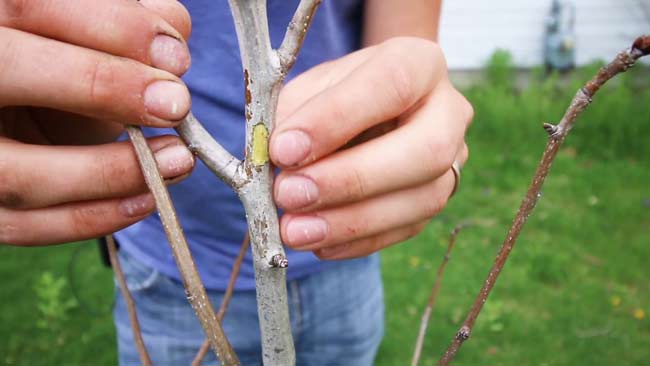Many people mistake a dormant deciduous tree in winter for a dead tree. Looking at it from a distance can sometimes be hard to distinguish.
It’s pretty easy to tell the difference between a dead and dormant tree, but doing a quick test or looking for some key signs is a surefire way to know.

Table of contents
ToggleHow to identify a dead tree
Here are two really simple tests you can do at home to know for sure whether your tree is dead or simply a late bloomer.
The scratch test – By scratching the outer side of the bark, you will be able to reveal the second layer (the one under the layer you scratched off) is green. This is a good sign that there is still hope for your tree, and it might need some more time before it blooms.
The snap test – The second way is by bending a year-old twig to a 90-degree angle. If the twig breaks, the tree is most likely dead.
Signs like fungus or horizontal cracks are clear signs of a dead tree if inspected from only visual observation. You can tell a tree is dead in a much earlier stage by looking at new twigs and seeing whether their buds are dry or green.
If you pull at one of the buds and it comes off easily, the tree is most likely dead. But I urge you to try both of the above tests on several branches just in case you pick a branch/ twig that happens to be dead. Lots of trees get dead branches and the rest of the tree is fine.
When is a tree considered dead?
If a tree is showing cracks in the trunk, bark that is flaking or falling off or fungus growing under one of the branches, your tree is dead.
These signs mean that your tree is not able to absorb nutrients anymore and will no longer grow new leaves and branches. If your tree is in this state, it will only deteriorate further and eventually die if it hasn’t already. Technically a tree is considered dead if it isn’t able to absorb nutrients anymore.
How to bring a tree out of dormancy
If you have determined that your tree isn’t dead but simply dormant, a few things could have happened. Most likely, your tree didn’t get enough sun-hours or nutrients.
In this case you will need to give your tree more time or better soil and it will hopefully start to show clearer life signs soon. If this is not the case you will have to determine what causes the dormancy of your tree. Consider things like; underwatering, overwatering or root damage.
The best thing you can do though is just wait. Some trees take fully 4 weeks longer than others to begin showing signs of life after winter. If in doubt, contact a consulting arborist for a tree inspection ASAP.
Can a half dead tree be saved?
The answer is; sometimes. If you see that parts of the tree are dried out or leaves are falling off when they shouldn’t, the tree is most likely dying. But if your tree has a disease or infection, there might be ways of saving it.
Firstly you might need to determine if there is something that is causing the tree to die such as a drastic change in surrounding conditions such as compacted soil, or drought pest infection.
If it is just down to old age, cutting off the dead/ dying branches and allowing all resources to be directed to the healthy parts of the tree should give it a real kick.
Are dead trees dangerous?
Large dead trees can cause dangerous situations if they are located in places where people pass by. Dead trees can fall down or branches can break off when someone walks near or under it.
Another danger is trying to take down large trees yourself. Dead trees can break unexpectedly and harm those trying to cut it down. If you are in doubt about whether you should take down a dead tree yourself, it is advised you contact a professional arborist and let experts safely cut down your tree.
For more information on the cost of getting a tree removed by an expert, please refer to our tree removal cost guide.
Do I need a permit to remove a dead tree?
In short no. Most local cities and councils have tree protection laws to preserve the canopy cover and all the benefits bring the community as a whole. Once the tree has died, it becomes more of a danger than an asset to the community.
No matter the size or location of the tree on your property, you are safe to cut the tree down without council permission.
I do advise you to take documenting photos of the tree before you proceed. It’s a little hard to prove the tree was dead once it has been removed.






